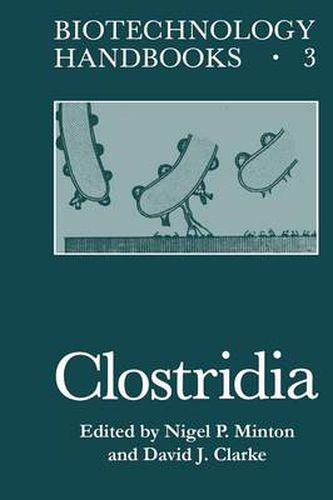Readings Newsletter
Become a Readings Member to make your shopping experience even easier.
Sign in or sign up for free!
You’re not far away from qualifying for FREE standard shipping within Australia
You’ve qualified for FREE standard shipping within Australia
The cart is loading…






This title is printed to order. This book may have been self-published. If so, we cannot guarantee the quality of the content. In the main most books will have gone through the editing process however some may not. We therefore suggest that you be aware of this before ordering this book. If in doubt check either the author or publisher’s details as we are unable to accept any returns unless they are faulty. Please contact us if you have any questions.
To the uninitiated, the genus Clostridium is likely more to be associated with disease than biotechnology. In this volume, we have sought to remedy this misconception by compiling aseries of chapters which, together, provide a practically-oriented handbook of the biotechnologie potential of the genus. Clostridium is a broad grouping of organisms that together undertake a myriad of biocatalytic reactions. In the first two chapters, the reader is introduced to this diversity, both taxonomically and physiologically. In the following chapter, the current state of genetic analysis of members of the genus is reviewed. The remaining chapters concentrate on specific, exploit able aspects of individual Clostridium species-highlighting their range of unique capabilities (of potential or recognized industrial value), particu larly in the areas of biotransformation, enzymology, and the production of chemical fuels. Fittingly, the final chapter demonstrates that even the most toxic of the clostridia can be of therapeutic value. The contributors to this volume reflect the trans national interest in Clostridium, and we are indebted to each of them for making this volume possible. We particularly wish to acknowledge the contributions, both to this volume and to microbiology in general, of Dr. Elizabeth Cato, who, sadly, died shortly be fore publication ofthis volume. Finally, we would like to join the authors in recommending closer and wider consideration of the attributes and capabilities of this genus.
$9.00 standard shipping within Australia
FREE standard shipping within Australia for orders over $100.00
Express & International shipping calculated at checkout
This title is printed to order. This book may have been self-published. If so, we cannot guarantee the quality of the content. In the main most books will have gone through the editing process however some may not. We therefore suggest that you be aware of this before ordering this book. If in doubt check either the author or publisher’s details as we are unable to accept any returns unless they are faulty. Please contact us if you have any questions.
To the uninitiated, the genus Clostridium is likely more to be associated with disease than biotechnology. In this volume, we have sought to remedy this misconception by compiling aseries of chapters which, together, provide a practically-oriented handbook of the biotechnologie potential of the genus. Clostridium is a broad grouping of organisms that together undertake a myriad of biocatalytic reactions. In the first two chapters, the reader is introduced to this diversity, both taxonomically and physiologically. In the following chapter, the current state of genetic analysis of members of the genus is reviewed. The remaining chapters concentrate on specific, exploit able aspects of individual Clostridium species-highlighting their range of unique capabilities (of potential or recognized industrial value), particu larly in the areas of biotransformation, enzymology, and the production of chemical fuels. Fittingly, the final chapter demonstrates that even the most toxic of the clostridia can be of therapeutic value. The contributors to this volume reflect the trans national interest in Clostridium, and we are indebted to each of them for making this volume possible. We particularly wish to acknowledge the contributions, both to this volume and to microbiology in general, of Dr. Elizabeth Cato, who, sadly, died shortly be fore publication ofthis volume. Finally, we would like to join the authors in recommending closer and wider consideration of the attributes and capabilities of this genus.